Even in a year like 2020, one thing didn’t change in the tech world: Certain devices, technologies, and services shut down. The causes vary, as does the level of regret. Some things we’ll miss; some things we never cared about; and others, we’re glad to show the door. This year, we’re dividing the departed by how much we think most people will actually care. Check out our list below and wave goodbye or good riddance to:
Tech we’ll actually miss
FarmVille
 Zynga
ZyngaFew Flash games hitting end of life deserve their own entry, but few games have ever seized the public imagination like Zynga’s FarmVille. The company announced that as of December 31, 2020, FarmVille would drift off into the sunset with the rest of the Flash-based world.
FarmVille existed on Facebook, and for a few years the social network felt more like a vehicle for the game than anything else. Between June and October, 2009, 62 million people signed up to play the game, as reported by The New York Times. At the time that was close to one-fifth of Facebook’s global user base. FarmVille was huge, not to mention addicting. It had everything: critics, a Lady Gaga tie-in, business scandals, and one particularly horrific story.
With FarmVille you built a farm by growing virtual crops and livestock. You had freedom to design your farm as you wanted. The more work you put in, the bigger and better your farm grew. You could speed up progress with in-game purchases.
The addictive part was that FarmVille happened in real time, regardless of whether you were tending to your homestead. That led to numerous notifications during the course of the day that your crops were ready to harvest. A FarmViller delayed at their peril, as they risked ruining all their hard work.
It was a gaming obsession that we really haven’t seen since. For anyone who misses the digital home on the range, there’s always FarmVille 3.
Google Play Music
 Google
GoogleNearly a decade ago cloud-based music lockers were the big craze from companies like Amazon, Apple, and Google. But when the dust settles there can be only one (or two, or three). Google decided that 2020 was as good a time as any to stop duplicating its music efforts (since it’s so busy churning out new messaging apps), and made December 2020 the final death date for Google Play Music.
It was a months-long demise for the service as Google encouraged its users to transfer to the new hotness: YouTube Music. In August, Google blocked new uploads and downloads through its Music Manager app, and the music store was closed. In September, streaming music from the cloud started shutting down around the globe, and by the end of December all personal music collections were deleted.
The service replacing it, YouTube Music, is free to use and offers a premium membership to get ad-free music and to download music for offline listening.
Nintendo 3DS
After 9.5 years and 76 million unit sales, Nintendo finally said goodbye to Nintendo 3DS in 2020. The 3DS handheld gaming device was a revelation when it first came out in 2011, because it provided a glasses-free 3D experience back when the world lost its mind and thought 3D was awesome.
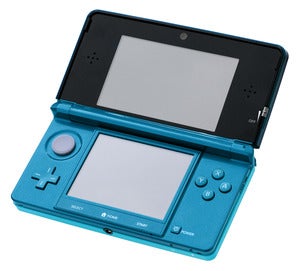 Evan Amos
Evan AmosWe reviewed the 3DS back then, and said it “may be less a gaming handheld than a totable multimedia center, only one of whose activities happens to be gaming.”
The 3DS was for games, of course, but it also let you connect with friends, take pictures, stream videos from a variety of services, record audio, browse the web, and more. It was a device that continued to hold the fascination of millions for nearly a decade, but its time finally came in September when Nintendo said it would no longer manufacture the 3DS family of systems, as reported by the BBC.
Wunderlist
The writing was on the wall in June, 2015, once Microsoft acquired the company behind Wunderlist, the popular to-do list app. Wunderlist has been up for deactivation since 2017 as part of Microsoft’s plans with its own To Do app. It took a while to check this item off the list, but the company finally stopped supporting Wunderlist in May.
You’re still here?
AT&T DSL
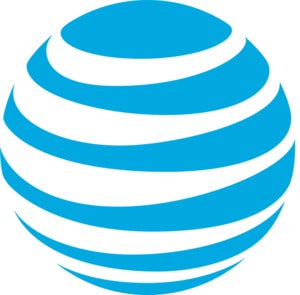 AT&T
AT&TFarewell, DSL. America’s largest Internet service provider is giving up on telephone lines for broadband connections.
When digital subscriber line (DSL) first came out it was a revelation. Instead of dreadfully slow dial-up connections, we could use telephone lines to get always-on, high-speed broadband Internet.
It wasn’t long, however, until we had even faster cable connections. Now the new goal is to get blazing-fast fiber connections.
DSL has been sitting on the chopping block for a while now, but it wasn’t until 2020 that AT&T took action. In October, the company said it would stop selling new DSL connections. “We’re beginning to phase out outdated services like DSL and new orders for the service will no longer be supported after October 1,” the company said. Existing subscribers can still use their DSL, but new users won’t be able to get the service. The change is hardest for people in rural areas where AT&T DSL is the only option, as USA Today reported.
Chrome apps
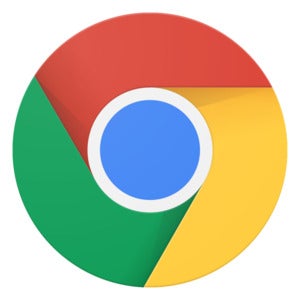 Google
GoogleIn January Google announced it would be putting an end to Chrome apps. Not extensions, mind you, just those standalone web apps that operate in their own windows like a desktop app, rather than in a browser tab.
This is the second time we’ve heard the death knell ringing for Chrome apps. Google announced way back in 2016 that it would give up on Chrome apps by 2018.
That never happened, but this time it appears to be the real deal. Google stopped accepting new public Chrome apps to the Chrome Web Store in March. By June, 2021, Chrome App support on Windows, Mac, and Linux will end. Chrome OS will keep running Chrome Apps until June, 2022.
Google said it’s giving up on Chrome Apps due to “significant progress of the modern Web and its ability to deliver first class user experiences for users.” Chrome Apps make less sense when Progressive Web Apps (PWAs) deliver a similar experience that isn’t necessarily tied to Chrome. Plus with Android and Linux apps running on newer Chrome OS boxes, Google’s browser apps are no longer necessary.
Facebook’s Windows 10 App
“Facebook had an app in the Windows Store?” Yes, it did, and no, it never made much sense. When the app came out in 2016 it was meant to target not only PCs but tablets and Windows phones (remember those?).
 Facebook
FacebookThe debut version of Facebook for Windows 10.
The Facebook app did have some advantages, because it could use Windows 10’s built-in notifications and support Live Tiles. But it never made much sense on PC because the website was Facebook’s focus for the desktop. With phones gone, and Windows tablets able to use the website, it wasn’t that surprising when Facebook put an end to its Windows 10 app in February, as MSPoweruser reported.
Facebook isn’t the only company to discard its UWP app. In fact, Microsoft seems to be setting the stage to give up on UWP in the not-too-distant future. Microsoft shut down its ad monetization platform for UWP in June. This followed a 2019 decision to bring traditional Win32 games to the Windows 10 App Store, in apparent surrender to developer and user preferences. UWP apps are still kicking, but unless there’s a big change the platform seems marked for irrelevance.
Mixer
 Microsoft
MicrosoftMicrosoft’s dream of creating a Twitch competitor died on July 22, 2020. That’s the day that Mixer shut down and Microsoft partnered with Facebook Gaming instead.
Mixer was a live video game broadcasting service just like Twitch, but Microsoft’s Twitch-style dreams were never that popular. Microsoft first got into the business after it acquired the “interactive livestreaming service,” Beam, in 2016. By 2017 it was reimagined as Mixer. In a push to increase the service’s popularity Microsoft made multi-million dollar deals in 2019 with well-known streamers such as Ninja and Shroud. But it wasn’t enough to boost the viewer base, and by the summer of 2020 all former Mixer streamers were free to move to other platforms.
VR follies
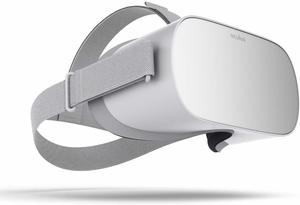 Oculus
OculusAt one point many expected virtual reality headsets to either conquer the world or go the way of 3D TVs and mobile phone VR. Neither outcome really happened. VR keeps on trucking with newer devices like the Oculus Quest 2 that don’t require tethering to an expensive gaming PC. Still, some VR platforms and devices said goodbye in 2020, including the Oculus Go and Oculus Rift S headsets.
On the mobile side, Google’s Daydream VR platform for mobile phones gave up the ghost. Google said in the fall it would no longer support Daydream VR software, and that items like the Daydream VR app wouldn’t work properly on Android 11.
Prior to Google’s decision, Samsung killed its XR virtual reality service on September 30, 2020. The end of the XR platform came after Samsung’s earlier decision to give up on its Gear VR headsets.
Finally, Steam decided to focus its VR efforts PCs and gave up on Steam VR for Mac.
Good riddance!
Adobe Flash Player
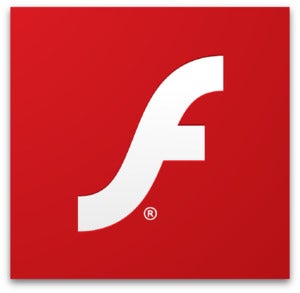 Adobe
Adobe In the 90s, Adobe Flash wasn’t just a component you used on the web; it pretty much was the web. Flash was how we played web games, every major entertainment site used Flash, and let’s not forget about all those Flash-powered ads.
Flash was a fantastic tool for its time, but it had security issues and power efficiency problems on laptops, among other drawbacks. So as the modern web developed, Flash’s doom was inevitable.
Flash actually held on far longer than anyone expected, considering Apple co-founder and CEO Steve Jobs fired the first shot at Flash way back in 2010 with his famous open letter. Its decline started officially in 2017 when Adobe said it would kill support for Flash by the end of 2020. Browser makers also started to restrict Flash, and eventually blocked it entirely.
Now the time has come for Flash to fade away. As of December 31, Adobe ends support for Flash. The company will block content from running in Flash Player beginning January 12, 2021.
This is good news for the web’s progress. Should you feel a pang of nostalgia, the Internet Archive emulates Flash animations, games, and toys in its software collection, letting you party like it’s 1999.
Amazon Echo Look
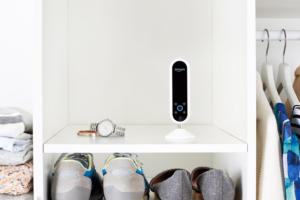 Amazon
AmazonIn the world of the Internet of things companies come up with some wacky ideas. One such was Amazon’s Alexa-powered Echo Look camera. This was a selfie camera that would offer fashion advice based on what you were wearing. The fashion advice was a mash-up of machine learning and “fashion specialists” that would judge your look based on color, shape, fit, and, of course, shoes.
When we reviewed the Look back in 2018 we thought it was fun for taking selfies, but the fashion advice left a lot to be desired. Shoppers apparently thought so too as this $200 doohickey never caught on. The Look and its companion app ceased to work on July 24.
Amazon hasn’t given up on doling out fashion advice, however, as that feature is now part of the Amazon Shopping app and other Alexa-enabled devices.
Windows 7
Versions of the Windows operating systems are so widely used they have several deaths to prepare users for the inevitable. These include the end of retail sales, end of feature support, and the end of security updates. The latter is the final nail in the coffin, and Windows 7’s end of life hit in January, 2020. PCs rocking Windows 7 can still operate, of course, and like Windows XP fans before them Windows 7 users will likely keep logging time on the old OS regardless of the lack of security updates.
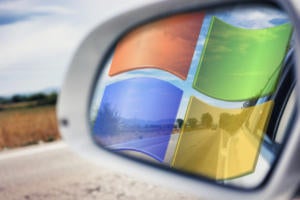 pan xiaozhen modified by IDG Comm. / Microsoft (CC0)
pan xiaozhen modified by IDG Comm. / Microsoft (CC0)Windows 7 was a welcome follow-up to Windows Vista, in keeping with the Microsoftian tradition of one bad OS release followed by a good one. Windows 7 built on some of Vista’s strong foundations while removing its annoyances and producing a generally better experience.
It was a fantastic OS, but if you’re using a Windows 7 PC it really is time to move on. Most Windows 7 PCs should be able to run Windows 10, and while the interface isn’t the same it’s a fantastic operating system in its own right.




